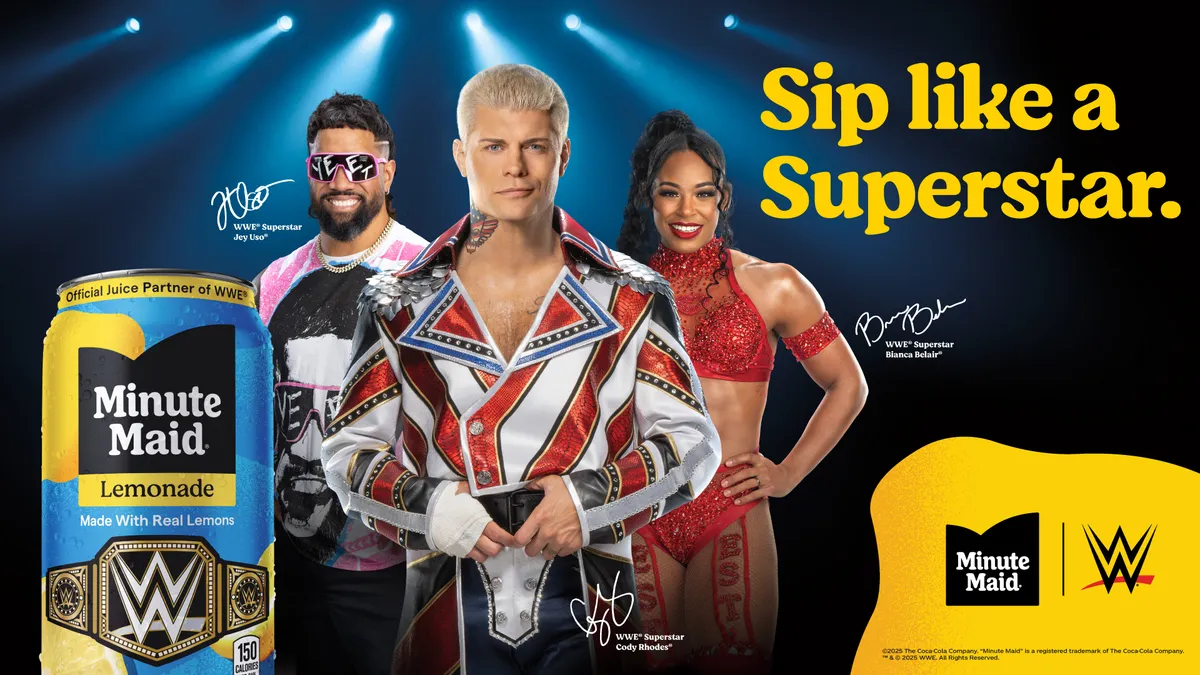On the Internet, as in comedy, timing is everything.
Thanks in part to a shift in consumer preference toward online shopping, holiday marketing campaigns have started popping up earlier and sticking around well past the final ornament is packed away.
But it's not just brand-created campaigns that will be permeating news feeds and banner ads over the next month. With the rise of social platforms like Facebook, Instagram, Snapchat, and Twitter, consumers have become "core content producers" for brands, Wayin's VP of Marketing Jordan Slabaugh told Marketing Dive in an interview.
By leveraging user-generated social content in their marketing campaigns, Slabaugh said brands are finding a way to keep the conversation going with potential clients, expanding reach and building loyalty.
As the lines marking the beginning and end of the holiday season continue to blur, expect to see advertisers looking to social chatter for new crowdsourced strategies to attract and activate their target audiences at just the right moments.
Searching for the trail of intent
When consumers search online for sales promotions, they leave behind a trail of intent, which often helps marketers pinpoint audiences to target.
Social media posts can offer brands a glimpse into what is top of mind for shoppers in that moment. Search, which "is often the first indicator that someone is in-market for a product or service, can be a wealth of information for marketers looking to find and get in front of new prospects and drive qualified traffic to their site or actual store," Jamie Fishler, vp of marketing for Magnetic, told Marketing Dive.
Based on findings from last year, Fishler predicted searches for holiday promotions will spike early on in the week leading up to Thanksgiving and that brands can expect to see "a steady pace in conversions" throughout the entire Black Friday/Cyber Monday weekend.
Two weeks ahead of Black Friday, social media mentions of the shopping holiday were up 20% over last year, according to Salesforce Marketing Cloud's Social Studio. And according to the National Retail Federation, 56% of shoppers had already started their holiday shopping by early November, up from 54% last year.
"Smart marketers will [need to] home in on the conversations and topics where they see the opportunity to make the biggest impact," Tom Hasselman, senior manager of product marketing at Salesforce, wrote in a post about the social findings.
"People expect to hear about the promotions and deals that matter to them and they’re doing more and more due diligence so that they are armed and ready to buy when the clock strikes twelve," Fishler said. It is crucial for marketers to be "prepared to find and reach these potential buyers as soon as they signal intent."
If you hesitate when someone signals intent and aren't prepared to reach them wherever they are, "you might be missing out on Black Friday dollars," she said.
6 tips for using social display ads
With social display advertising, brands can incorporate user-generated content into existing campaigns in real-time.
.@3BrooklynKids hinted at a new LeapTV, so we headed out to Brooklyn, NY to make her #HintingSeason wish come true. https://t.co/NWfEMWaGsF
— Best Buy (@BestBuy) November 26, 2014
Magnetic's Fishler encourages clients to leverage search data to optimize their efforts. "This allows them to reach and influence in-market shoppers early on with creative advertising such as interactive formats, video, native, and Facebook when they are engaging online on desktop, tablet or smartphone devices," she said.
Facebook and Instagram, for example, have enabled holiday ad targeting on their platforms in time for Thanksgiving. The social networks have a massive reach, and that represents a huge opportunity to leverage social media "to get in front of in-market shoppers and keep their attention up until the sales event begins," Fishler said.
As shoppers gear up for Black Friday and Cyber Monday, sales searches tend to be at all time highs, according to Magnetic. Just within Facebook alone, "marketers can mix search data and site engagement with mobile, video and other socially-enabled creative formats," Fishler said.
Wayin's Slabaugh said it's important for marketers to remember that people trust people. She offered 6 tips for what advertisers looking to leverage social display campaigns should do and not do:
1. Do: Experiment with live social feeds
Although it's not a holiday campaign, Oreo's reaction to the power outage during the 2013 Super Bowl is a great example of timely use of social media. By pushing out a post during a moment when consumers were paying close attention to social media, the brand was able to drive a lot of engagement.
2. Do: Build enthusiasm for upcoming events
Slabaugh gave the example of a travel brand promoting an island getaway, including pictures from vacationers enjoying the sun, while most people are stuck in the winter cold. She explained that this unnamed travel company asked vacationers to submit pictures via social media using a special hashtag, which not only mustered interest from potential consumers but also helped gather the user-generated content they needed for their campaign.
3. Do: Give a specific call to action
The call to action will be different depending on the brand and the campaign, but ensuring the call is clear and specific will help marketers cut through the noise. Best Buy, for example, last year called on shoppers to participate in the #HintingSeason by posting on social media gifts for which they wished.
"We as consumers are willing to participate if it's relevant, so giving us guidance on that action if it's specific is a key to success," Slabaugh explained.
4. Don’t: Pull content from just one platform
"Marketers know they can’t rely on any single channel for communication, and the same type of idea can apply to social displays," Slabaugh said, encouraging marketers "to pull from as many relevant platforms as possible, while making sure to pay attention to the way people are engaging on each of those channels."
5. Don’t: Let your display go unattended
"Social displays are designed to let conversations flow," she said. "That means they need to ensure the content stays both fresh and relevant. Brands creating display experiences shouldn't let content get stale, bur rather showcase the most interesting, real-time voice of user-generated content."
6. Don’t: Forget to promote and invite participation
"User-generated content is powerful and persuasive," Slabaugh said, but "just because brands build displays to showcase this does not mean consumers will come." Besides creating incentives for consumers to add to the conversation, it's crucial for marketers to promote the initiatives themselves.






















